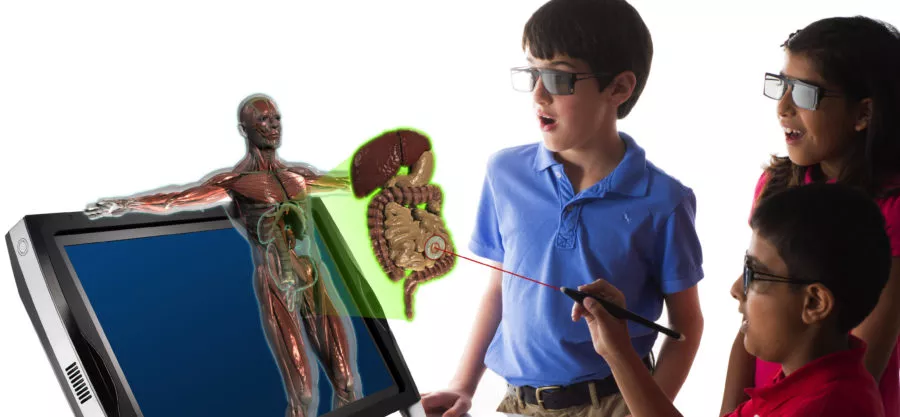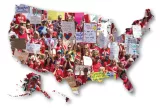The poster child for a cutting-edge classroom over the years has included computers (back in your mom’s school days), iPads (a surprisingly long time ago), 3D printing, Maker Space, and G Suite. By now, those have all been mainstreamed, with savvy parents asking, “What else do you offer?” In today’s world, “Augmented Reality” is the most popular ending to the sentence that begins, “My school actually has...” Called AR for short, the technology does exactly what the name suggests: It allows students to learn more about what they see.
Using reality inspired by their lesson plan, teachers expand—in fact, they supersize—lessons with motion, color, websites, audio, and other pieces that enrich students’ experience. When students unpack learning via AR, they want more and don’t want to leave. They also develop a willingness to solve complex math problems and understand deep concepts just
so they can see what else comes with augmented reality.
As an affordable boost to educational engagement, AR in theory takes students into Harry Potter’s world where school hallways are lined with interactive paintings. After downloading an Android or iOS AR app, students aim their phones at an image (called a “trigger”) and reveal deeper content layered on top of the physical world. The content can be a student’s discussion of a book they read or the inspiration behind their artwork. Unlike QR codes or other embedded link technologies, AR content is superimposed onto existing materials in the student’s own real-time environment.
How is AR Different From Virtual Reality?
Ask anyone about AR, and the usual answers will conflate it with Virtual Reality (VR), which is a wonderful education tool in its own right. But there are important distinctions between the two. Kathy Schrock, Adobe Education Leader, Google Certified Teacher, Sony Education Ambassador, Discovery Education STAR and a DEN Guru, and columnist for Discovery Education (just to name a few of her accolades) said it best:
“Augmented reality layers computer- generated enhancements on top of an existing reality to make it more meaningful through the ability to interact with it.”
“Virtual reality is a computergenerated simulation of real life… It immerses users by making them feel they are experiencing the simulated reality firsthand.”
How to Use AR
While AR isn’t difficult or expensive to use (especially when compared to 3D printing or makerspaces), it does require forethought and planning. You’ll need a smartphone or tablet with a back-facing camera, an augmented reality app (many free versions are available), a trigger image (you can create one yourself, probably for free), and an Internet connection. Then, scan the trigger image with a mobile device app and see what happens!
 Jacqui Murray has been teaching K–18 technology for 30 years. She is the editor/author of over 100 tech ed resources including a K–8 technology curriculum, K–8 keyboard curriculum, K–8 Digital Citizenship curriculum. Murray is an adjunct professor in tech ed, Master Teacher, webmaster for four blogs, an Amazon Vine Voice, CAEP reviewer, CSTA presentation reviewer, freelance journalist on tech ed topics, and a weekly contributor to TeachHUB. Find her resources at Structured Learning. This essay first appeared at askatechteacher.org
Jacqui Murray has been teaching K–18 technology for 30 years. She is the editor/author of over 100 tech ed resources including a K–8 technology curriculum, K–8 keyboard curriculum, K–8 Digital Citizenship curriculum. Murray is an adjunct professor in tech ed, Master Teacher, webmaster for four blogs, an Amazon Vine Voice, CAEP reviewer, CSTA presentation reviewer, freelance journalist on tech ed topics, and a weekly contributor to TeachHUB. Find her resources at Structured Learning. This essay first appeared at askatechteacher.org



